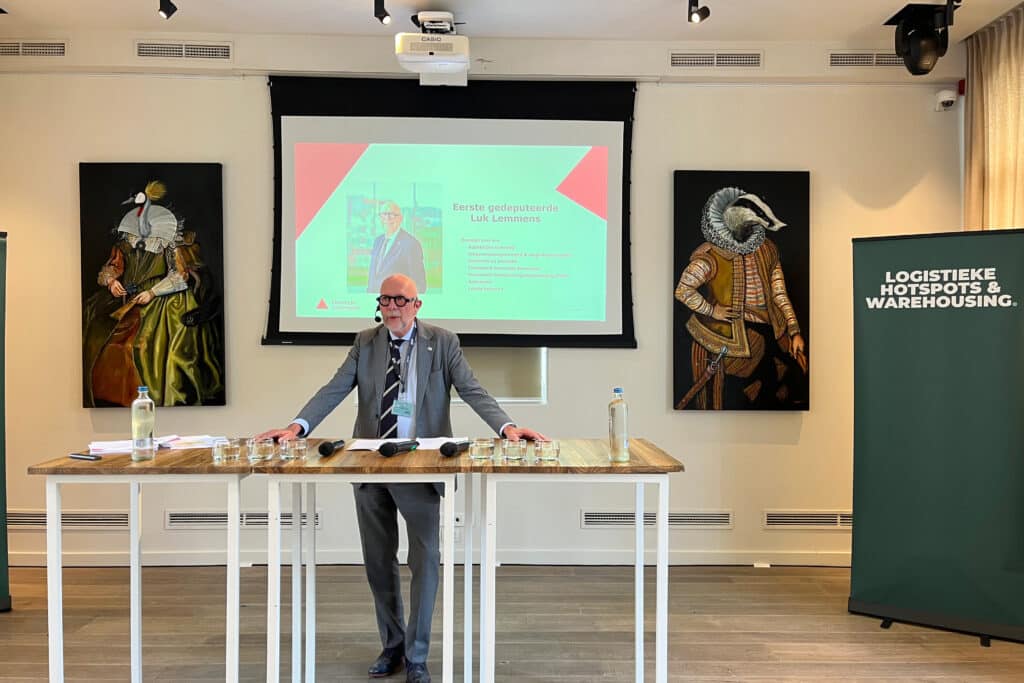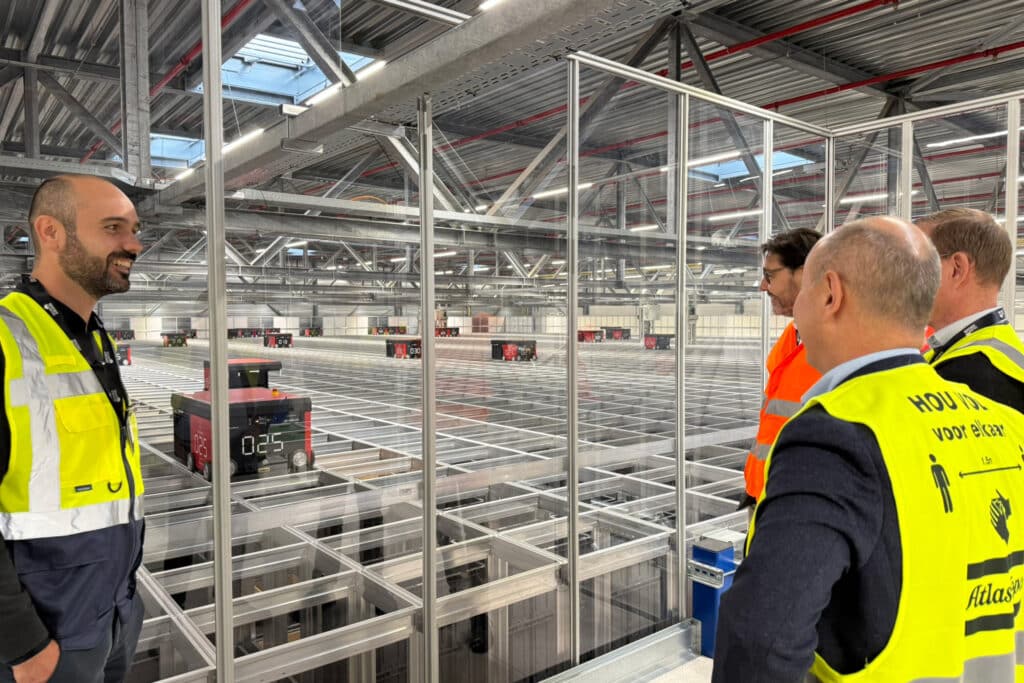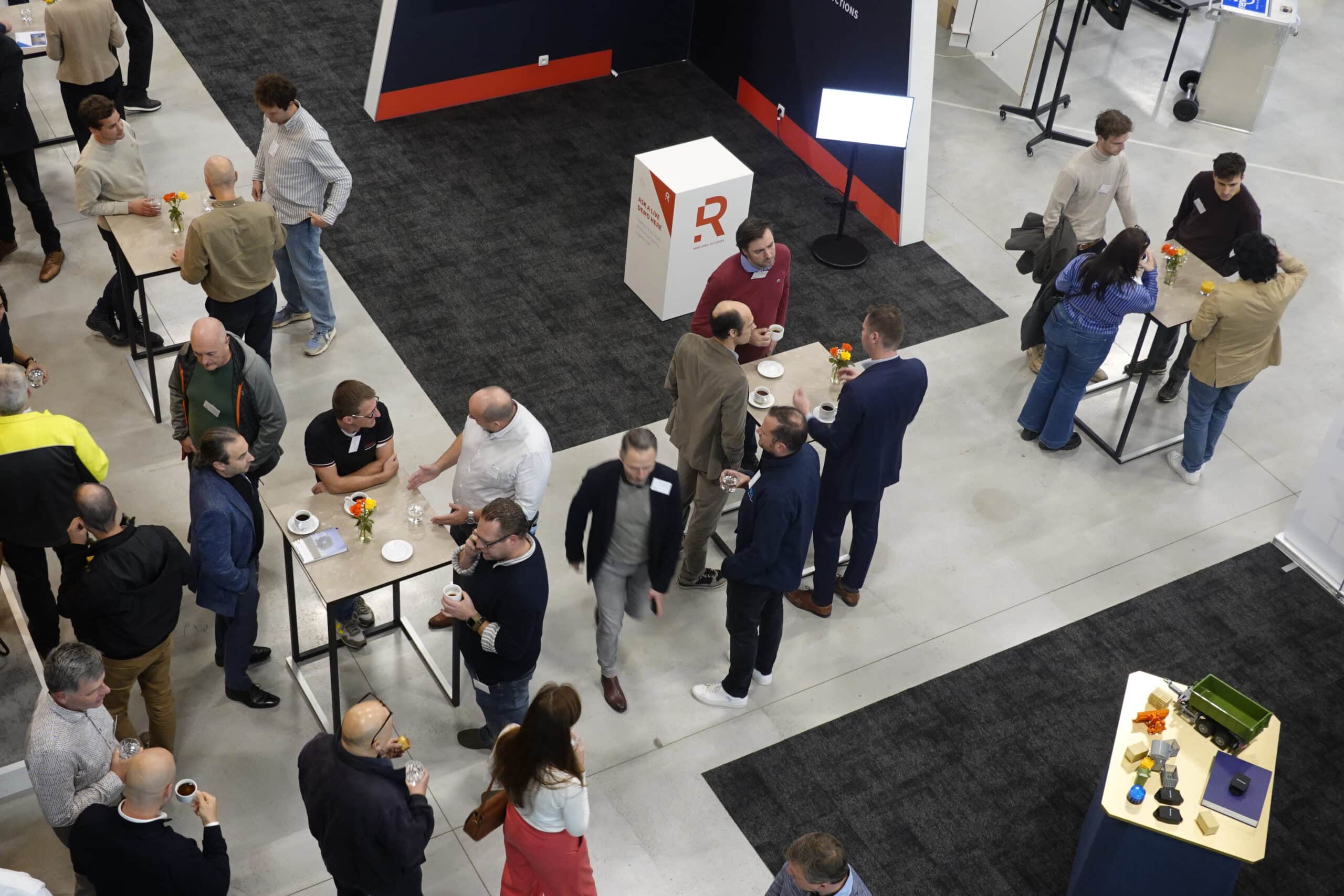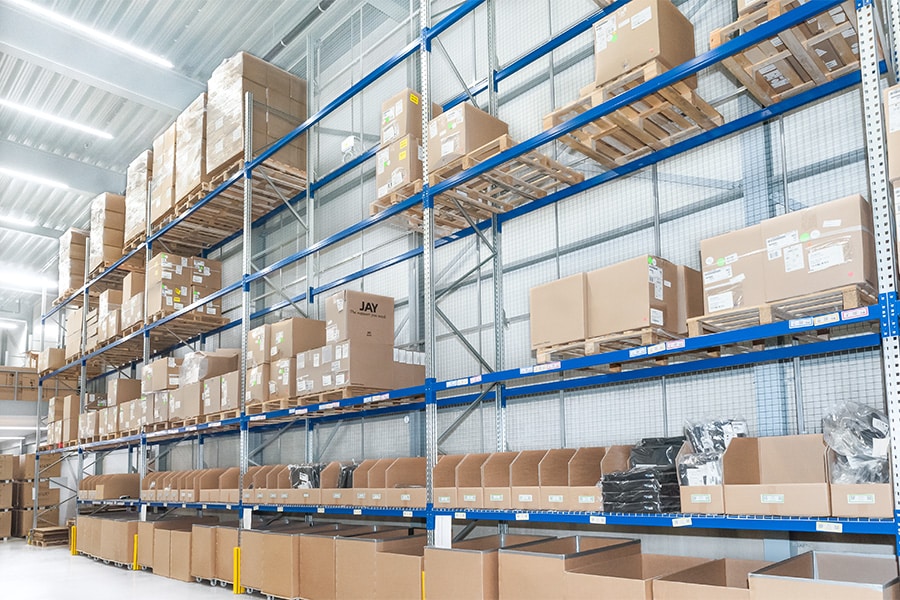
Logistics sector in transition: between lack of space, energy hunger and sustainable ambition
On Oct. 21, 2025, Management Productions hosted the sixth edition of Logistics Hotspots & Warehousing. With Warehouse & Logistics as one of the media partners, the organizers brought together logistics players in the Wikrijk Salons Van Edel for an afternoon of insights and debate. Experts, managers and policymakers discussed the challenges and opportunities of a sector in transition.
A world in change
The conference opened with a sharp economic and geopolitical analysis of Koen De Leus, chief economist at BNP Paribas Fortis. He outlined a world where resources are scarce, debts are running high and labor markets are under structural pressure. “Rare earth materials come largely from China,” he stated. “That makes negotiations complex, but inevitable.”
De Leus emphasized that deglobalization - the deliberate shortening of international chains - will structurally increase inflation. The logistics world is feeling this firsthand: more local production and higher labor costs are squeezing margins, while geopolitical tensions and government intervention are further eroding the predictability of international trade.

From perfect storm to new equilibrium
Professor dr. Roel Gevaers (UAntwerp) pulled those macro trends through to logistics reality. He indicated that since 2020, the industry has been in a “perfect storm” of successive crises, from pandemics to energy crises. Those shocks forced companies to reinvent their supply chains. “Chains are becoming shorter, greener and more expensive, but also more robust,” Gevaers said.
The classic just-in-time-approach is giving way to strategic inventories, regional production and more cooperation between logistics, real estate and energy. Because sustainability is no longer a prerequisite, but a survival strategy. Gevaers aptly summed it up, “Logistics companies are becoming energy companies.”
Yet the balance remains precarious. Sustainability requires hefty investments, while economic and geopolitical uncertainties make profitable business cases difficult. Automation, grid congestion and decentralization mark the future, but without stable regulation and reliable energy supplies, implementation remains a challenge.
Space wanted
The topic of space management was brought into focus by Luk Lemmens, deputy of the Province of Antwerp. “Space policy cannot be separated from licensing. We realize how important fast procedures are for entrepreneurs,” he stated.
Practice, however, shows a dire shortage. “There is simply not enough room,” warned Christophe Wuyts of the real estate player Ceusters. “New construction projects in Antwerp and Brussels are at a standstill. Big players are building in height, but even that approach has its limits.” Edwin Eggebeen from DSV illustrated this with a concrete example: “In Ghent, we literally had the last piece of land.” Their new warehouse is designed from the inside out - an illustration of how creative companies must deal with scarcity.

Energy: the new gold
The second major talking point of the conference revolved around energy (management). The electrification of transport and warehouses comes up against a harsh reality: electricity is becoming both more expensive and scarcer. Moderator Roel Gevaers put his finger on the problem: “If you want to electrify your fleet, you have to work with self-generated energy.”
Lieselot Rouquart from Colruyt showed the scale of the problem. “Our trucks travel 210,000 kilometers every day. The electrification of our fleet is a huge challenge. Not only in terms of charging infrastructure, but also in terms of grid capacity.”
That grid capacity is exactly what Hans Van Sebroeck from Fluvius worries. “We see companies reserving grid capacity en masse that they may not need. The system of ‘first come, first serve’ is running up against its limits.”
For companies such as Montea, represented by Dirk Van Buggenhout, is clear: “Energy management is becoming an integral part of their services. Montea is therefore investing not only in warehouses, but also in solar panels, batteries and smart energy storage.”
Automation as the answer
Automation proved to be the third common theme of the afternoon - not coincidentally a result of both lack of space and energy demand. During a preliminary company tour, participants got a behind-the-scenes look at the new, fully automated warehouse of Atlas Copco, where efficiency and robotization go hand in hand.
Another inspiring example came from GC Europe. Vice President of Supply Chain Walter Bogaerts told how the company completely automated its warehouse in Leuven. Without expanding the building or hiring additional staff, storage capacity doubled and delivery reliability rose above 99.5 percent. The investment is paying off: within seven years, GC Europe expects a full ROI as well as room for a new plant.



